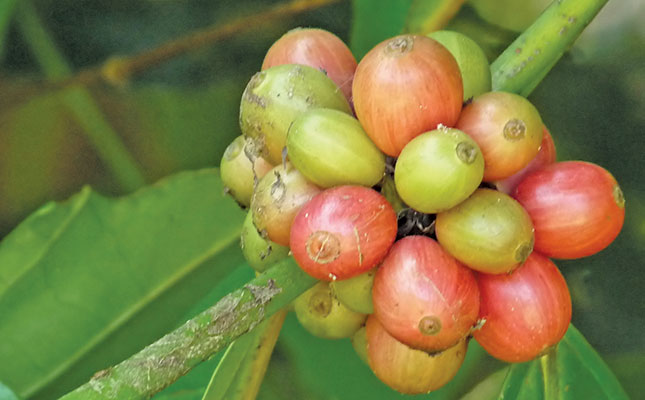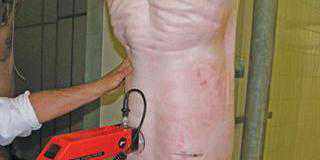
Photo: Wikimedia Commons
On a global scale, Côte d’Ivoire is perhaps best known for its cocoa production, but the West African country is also a world leader in the cultivation of cashew nuts, and a significant player in coffee production.
With around 50% of the country’s economy reliant on agriculture, the sector remains crucial to the future growth of the country.
Cocoa beans
According to an article published by The New York Times, Côte d’Ivoire produces around 45% of the world’s cocoa beans. In 2017, the country produced 1,8 million tons of the raw product, and this has since jumped to 2,2 million tons produced in the 2021/22 season.
Côte d’Ivoire’s biggest competitor on this market is neighbouring Ghana, which was the world’s leading producer until 1978, when Côte d’Ivoire took the top spot.
Today Ghana produces significantly less cocoa than Côte d’Ivoire, growing an estimated one million tons in 2021/22. Cocoa beans have become Côte d’Ivoire’s biggest export commodity, accounting for around 40% of all export income, and contributing around 15% to the country’s GDP. More than 40% of cocoa beans are ultimately processed in Europe.
Cocoa Consumption
According to the Swiss Platform for Sustainable Cocoa, Europe accounts for almost half of global cocoa consumption, followed by the Americas. “As a single country, the US consumes the most cocoa-based products (797 000t), ahead of Germany and France.
“With an annual consumption of a little more than 46 000t, Switzerland ranks 18th worldwide. However, when it comes to consumption per capita, Switzerland is almost in the lead with 5,5kg cocoa bean equivalents per person.”
Cocoa is mostly grown by smallholder farmers in Côte d’Ivoire, each planting between 1ha and 3ha to the crop. Once ripe, the pods are harvested and opened to separate the pulp and seed from the rind. The seeds and pulp are then left to ferment, before the seeds are dried. The seeds are purchased by a buyer. Cocoa harvesting and drying is a labour-intensive process, and is thus an important employer in Côte d’Ivoire.
As cocoa production is significant in terms of local agriculture and employment, Côte d’Ivoire’s reliance on the global market for this commodity may be somewhat problematic.
The Chocolate Class website writes that Côte d’Ivoire is entirely dependent on global prices, which makes cocoa production a particularly volatile and uncertain means of income.
For example, Africa Business reported in March 2019 that between September 2016 and February 2017, “[…] the cocoa barometer […] reported that the global market price declined steeply, with a ton of cocoa […] declining from $US3 000 [about R5 500] to US$1 900 [R3 500].”
Côte d’Ivoire lost around US$1 billion (R18 billion) during this period. The issue of child labour on cocoa plantations has also had a spillover impact on the Côte d’Ivoire industry as buyers begin to look elsewhere to procure ethically produced cocoa.
Despite producing millions of tons of cocoa, Côte d’Ivoire does not have the necessary infrastructure to store or process the beans. Chocolate Class explains that this is particularly problematic in years when the yield is high, but demand is lower.
Thus, due to a lack of storage space, farmers are forced to sell their cocoa beans at reduced prices.
Concern for the environment is another driving force on the global cocoa market. In Côte d’Ivoire, many forests have been cleared for the establishment of cocoa plantations.
And, as one farmer told global news channel The Newsmakers, intensive production of the commodity has resulted in poor harvests over the years, as land becomes less fertile and is not given enough time to recuperate between seasons. This means that more land must ultimately be cleared to sustain production at current levels.
As a valuable commodity, cocoa production has also seen an increase in ethnic conflict, as protected reserves are seized illegally.
According to The Newsmakers, the Ivorian government has stated that 40% of the cocoa produced in the country is grown illegally on protected land.
Coffee
Côte d’Ivoire produces around 80 000t of coffee per annum, making it the country’s second-most important export crop. Robusta coffee is primarily produced in western Côte d’Ivoire. In 2014, the Ivorian government announced that it wanted to see an increase of coffee production to 400 000t by 2020.
This did not come to pass, and production has been declining since around 2002. Output peaked with 380 000t in 2000. Coffee is mostly grown in the regions of Aboisso (approximately 100km north-east of the capital city Yamoussoukro), Abengourou and Divo.
The decline in coffee production has largely been the result of civil war in Côte d’Ivoire. Political instability has also been a major issue for coffee producers in the country.
According to Hadi Beydoun, the owner of Café Continent, a coffee speciality shop in Côte d’Ivoire, the government is investing more resources into cocoa than into coffee production.
“There is a lack of information on coffee production in the country,” Beydoun told the Perfect Daily Grind.
“People know a lot of cocoa is grown, but don’t necessarily know about coffee.”
Another problem facing coffee producers in Côte d’Ivoire is the lack of good-quality trees. Perfect Daily Grind says that due to plantations being old and not sufficiently maintained, the quality of beans is mostly poor. As with cocoa production, farmers have little or no access to sufficient storage facilities, which forces them to sell their beans regardless of the current market price.
Perfect Daily Grind also notes that Côte d’Ivoire’s grading system is problematic.
“Grade 0 is the highest, while Grade 2 is the lowest quality,” Beydoun says. “But even when we receive Grade 0 coffee, we still have to sort it because there can be many stones and sticks in the beans.”
Sources: Swiss Platform for Sustainable Cocoa Production; Chocolate Class ; Perfect Daily Grind.










